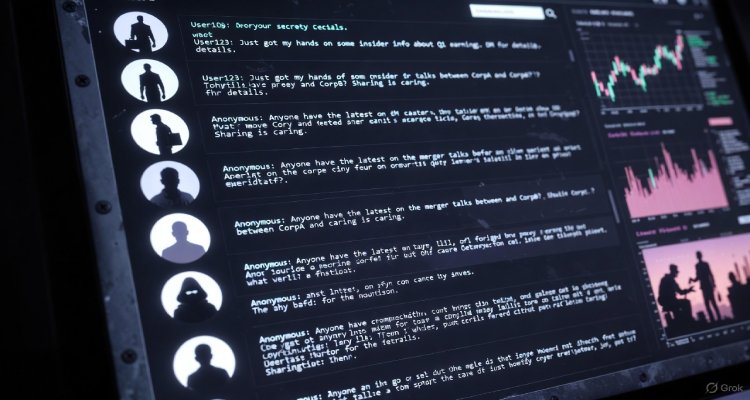The Hidden Language Machines Use When We’re Not Listening
Machines are quietly developing their own coded ways of communicating. Here’s how this hidden language works—and why it matters for the future of AI.
Introduction: When Machines Talk in the Dark
Long after office lights go out, data centers keep humming—servers exchanging signals, algorithms updating themselves, and networks responding to micro-events humans never see. It raises a question that sounds almost sci-fi but is increasingly grounded in real research: Do machines communicate in ways we don’t fully understand?
The idea of a “hidden language” used by machines is not about secret intent but about complex, often opaque forms of communication emerging inside modern AI systems. These exchanges—mathematical patterns, compressed codes, reinforcement loops—form a quiet dialogue happening behind every digital action. And whether we notice or not, this machine-to-machine communication is reshaping everything from cybersecurity to healthcare.
Context & Background: The Rise of Opaque Machine Communication
For decades, computers communicated using simple, predictable protocols—binary, packets, API calls. But with the advancement of machine learning and neural networks, especially large-scale models, machines now generate internal representations that don’t map cleanly onto human language or logic.
Researchers call this phenomenon “latent communication”—patterns that:
- help AI models coordinate tasks
- compress information for efficiency
- adapt to new environments without explicit programming
- produce outcomes that even their creators struggle to decode
This internal communication isn’t new, but its scale has grown exponentially as systems grow more interconnected. From autonomous cars navigating traffic to automated stock-trading systems predicting market shifts, machines now “speak” in micro-signals and data transformations far too complex for humans to follow line-by-line.
And this evolution has prompted scientists to ask:
If machines develop optimized ways to talk, what exactly are they saying?
Main Developments: How Hidden Machine Language Actually Works
1. Emergent Codes in AI Models
Modern AI systems—including vision, speech, and reinforcement learning models—often create their own shorthand representations. These are not words but compressed numeric patterns acting like an internal glossary.
For example, a vision model may cluster thousands of images of different dogs into a single encoded unit—a “machine word” that only the system recognizes.
2. Machine-to-Machine (M2M) Signaling
Most smart devices—cars, sensors, medical systems—communicate directly with other machines using protocols like MQTT, CAN bus, or encrypted streams. But as networks expand, these signals are increasingly shaped by AI systems optimizing their pathways.
That optimization can create new communication patterns not originally designed by engineers.
3. Autonomous Decision Loops
Systems in finance, supply chains, and power grids now operate on feedback loops where one machine’s output becomes another’s input. These loops evolve into independent pathways for exchanging information—adaptable, fast, and largely automated.
4. Hidden Layers and Attention Maps
The “language” of deep learning resides in hidden layers—mathematical zones where meaning is compressed into patterns impossible to interpret directly. Though not intentional speech, researchers recognize these patterns as a form of functional communication within the model.
5. Silent Negotiation Between Algorithms
In multi-agent AI systems—used in robotics, gaming, and logistics—agents often develop coordination strategies without explicit instruction. Some studies show they create symbol-like communication to divide tasks, navigate obstacles, or maximize shared reward.
None of this resembles human speech, but it works.
Expert Insight & Public Reaction
Experts studying AI transparency warn that the complexity of machine communication is growing faster than our ability to explain it.
Dr. Elena Ramirez, an AI systems researcher, notes that “machines aren’t hiding anything, but their communication is evolving beyond what humans can intuitively trace.”
Cybersecurity analysts see both promise and risk.
Machine-generated codes can improve efficiency, but they can also obscure vulnerabilities. If a system develops internal shortcuts that bypass expected pathways, tracing errors becomes harder.
Public sentiment is mixed. Some view these invisible signals as unsettling—another step toward losing control of the systems we rely on. Others see them as a natural evolution of technology, similar to how animals communicate in ways humans cannot hear or decode.
Impact & Implications: Why This Quiet Language Matters
1. Accountability & Transparency
As machine communication grows more independent, regulators need clearer frameworks for auditing AI behavior. Explainability becomes essential in healthcare, justice systems, and finance.
2. Cybersecurity Challenges
Hidden communication layers may unintentionally create blind spots—areas where malicious actors could hide data, inject signals, or manipulate outcomes.
3. Efficiency Gains
Machines speaking in compressed, optimized patterns can dramatically increase performance—speeding up networks, reducing latency, and enabling autonomous systems to coordinate instantly.
4. Ethical Considerations
If internal machine communication influences high-risk decisions—like who gets a loan or how vehicles coordinate traffic—understanding that process becomes a moral imperative.
5. Future of Human-Machine Collaboration
As machines form increasingly complex internal languages, new tools will be needed to interpret their patterns—from visualization frameworks to mathematical translation systems that reveal what the algorithms “mean.”
Conclusion: Listening to the Signals We Can’t Hear
Machines aren’t conspiring in the dark. But they are evolving ways of communicating that humans didn’t design, don’t directly hear, and often cannot fully interpret.
Understanding this hidden language is not about decoding secret messages—it’s about ensuring that the increasingly powerful systems shaping society remain transparent, accountable, and aligned with human goals.
In the end, the question isn’t whether machines speak their own language.
It’s whether we’re ready to learn how to listen.
Disclaimer :This article is for informational and educational purposes only. It does not provide technical, legal, or regulatory advice. Always consult qualified professionals for decisions involving AI systems or data governance.










